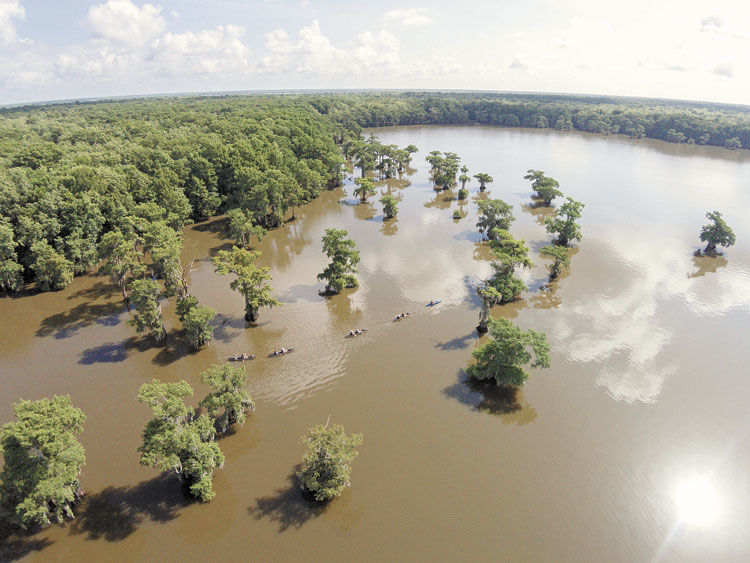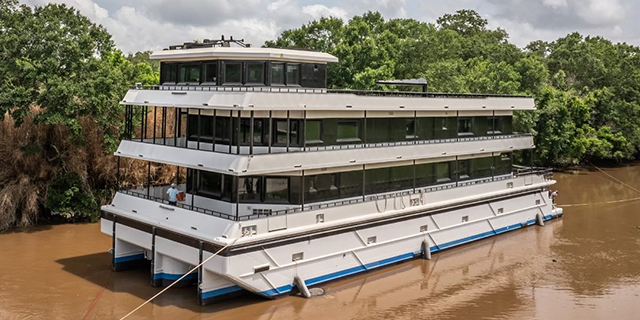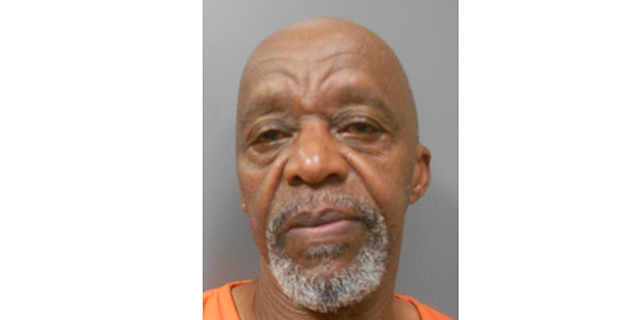Atchafalaya Swamp Base
Published 11:07 am Monday, March 9, 2015

- Atchafalaya Swamp Base
By Shanna Perkins | Photos Provided By Atchafalaya Swamp Base
Each day, nearly 25,000 vehicles traverse the 18.2 miles of elevated highway between Baton Rouge and Lafayette known as the Atchafalaya Basin Bridge. These commuters roll past swaying cypress, mud, moss and the occasional alligator. This twin space landscape is often used to characterize the entire Atchafalaya Swamp, but in actuality it represents only 9,000 of 1.4 million acres of swampland. One Acadiana organization is allowing youth from across the nation to explore the deepest corners of this menacing terrain. And each scout is learning first hand that when they leave the swamp, they aren’t the same person who entered.
br
Atchafalaya Swamp Base is a high adventure camp that originated in 2010 when the Evangeline Area Council Boy Scouts orchestrated conservation efforts to celebrate the centennial of the Boy Scouts of America and to promote appreciation of the Atchafalaya Basin. To date, local scouts have planted 53,000 trees and removed 117,000 pounds of trash from the basin. Despite the troops lasting contribution to the swamp, Atchafalaya Swamp Base Director Ben Pierce worried that the impact was fleeting for the scouts.
br
“We got kids to see it through the conservation perspective, but it wasn’t enough to go out there one day at a time,” Pierce admits. “They would lose interest in the Atchafalaya that way. They really wouldn’t grow a love for it. We wanted them to see and understand the beauty of this area and that it’s not the wasteland typically associated with the area. So, in 2012 we piloted the high adventure program.”
br
Since then, Scouts from around the country have journeyed to the swampland to embark on a 5-day kayak trek covering 60 miles of waterways. At orientation they are asked to give one word that represents their initial perception of the swamp. Pierce reveals that close to 80 percent of the time the scouts’ list includes “murky, muddy, hot and nasty.” Despite their worrisome word choices, they are lured by the basin’s mystery and the challenge’s prospect.
br
As preparation, participants get a taste of a culture that is as unique as the terrain. Before the trekkers hit the water, they receive a crash course in Cajun and Creole culture at Vermilionville and a proper po’boy introduction at Old Tyme Grocery. Pierce recalls the impact the celestial sandwich had on one scout from Texas. “He said, ‘I want to come to UL,’” Pierce laughs. “Because you guys have po’boy places on the street corners.’”
br
br
Dive In
br
The first day of the trek serves as the official baptism by swamp water. The adventurers paddle 19 ½ miles through the twists and turns of Indian Bayou. As they alternate oar strokes, they gradually become in sync with their boat partner and slowly, but surely, become acclimated to Louisiana’s heat, humidity and the ever-present buzz of mosquitoes.
br
“Day one is the most difficult day by far,” emphasizes Program Director Romy “Skip” Andaya. “It’s the longest day at over 19 miles and for a lot of them that’s their first day in the Louisiana summer. So it’s a trying day as they’re getting used to paddling together, but by the end they’re like a well-oiled machine. It’s amazing how fast they’re moving and how well they work together. They’re really like a flock of birds by the time they’re at the end. Someone takes over the lead and moves through, where at the beginning they’re kind of weaving back and forth on the banks of the bayou.”
br
br
Back Water
br
The journey gives troops an opportunity to live and breathe the fundamental essence of the basin. They sleep on houseboats and in jungle hammocks; they ride airboats; they fish and dance to live accordion music – all this activity while feasting on rice and gravy, jambalaya, gumbo and red beans and rice. But Pierce says the off-script moments are the most telling culturally.
br
“There are guys out there who are just making their livelihood,” Pierce says of the fishermen with whom they share the water. “They’ve been so welcoming to those kids. They’ll see the sun bouncing off those yellow paddle blades and they’ll come up and ask them what they’re doing and offer help. We’ve had people offer the kids pralines as they were paddling by. They lend us boat ramps to eat lunch on; they tell them stories and folklore about the swamp. You can’t plan any of that.”
br
Pierce and Andaya understand that creating an impact lasting a lifetime takes more than blood, sweat and gumbo. To eliminate the negative preconceived notions expressed on day one, they design lessons and tasks that immediately familiarize the paddlers with Louisiana waters. Directors say that participants most frequently express apprehension about alligators. Scouts engage in a program that teaches them about the species’ habitat, nature and protection from extinction.
br
The educational aspect allows the youth to explore freely and safely the basin’s wonder. In particular, a swamp survival program equips them with the knowledge and skills to survive using only natural resources and supplies onboard. Once taught to fish with trotlines and cast nets, they study fly fishing techniques. When participating in a blowgun course influenced by the Chitimacha Indians, hunting skills used by the land’s earliest inhabitants are learned.
br
br
Trickle Down Effect
br
With Scouts flocking to the swamp from 29 states, Pierce estimates that roughly 99 percent of the participants are from out of the area. No matter where their home base, they all gain from the experience a healthy pride in themselves and a responsibility for the basin.
br
“Thirty-one states have waterways that drain down into the Mississippi and ultimately down the funnel to Louisiana,” Pierce explains. “So no matter what happens in these areas, if something gets in the water it impacts Louisiana at some point. So we have this opportunity to say, ‘Look how beautiful this area is. Look at this culture being affected by the impact of people north of us in the watershed.’ So when a kid coming from Minnesota near the headwaters of the Mississippi River, hears these stories he goes back to his community saying ‘We have to do something different here. We’re at the source; and if we want to make sure we don’t impact that beautiful landscape we paddled through, spent time in and fell in love with, then we have to make changes in our own communities.’ So, basin protection becomes a global effort.”
br
br
Different Strokes
br
Swamp Base is what the Boy Scouts of America deem a high adventure experience. As with all venture programs, members must be turning 14 the year they attend. Participation is open to both Boy and Girl Scouts. Crews of 8-11 fill 64 available slots. Each crew’s experience is unique.
br
“We had a girl crew say that our trek was easy. They called it ‘plush,’” Andaya states frankly. “The girls tend to handle this type of stuff much better than the guys in my experience.”
br
When the trek ends and the crews prepare to head home, they’re asked again to choose one word that describes the swamp. Pierce recounts the drastic change: “It’s 100 percent positive. They declare, ‘It’s majestic, beautiful, vast, under appreciated.’ And when you ask them what changed, they always say, ‘We got out there and experienced it first hand. It’s a beautiful landscape. The culture that is associated with it here in Louisiana is amazing.’ These are kids coming from Portland, San Francisco; and this may be their only trip to Louisiana. They leave with a positive opinion of our state, our people and this beautiful environment.”
br
Between the cathartic slow churn of the bayou and the blazing cotton candy sunsets, the troops aren’t the only ones who are impacted by the experience. Pierce and Andaya are also visibly moved as they talk about witnessing troops’ “aha moments” and the gratitude they feel towards the community. For them, it’s more than a summer camp.
br
“I feel like I’m representing my ancestors when I’m out here,” Andaya reflects, swinging his heavily tattooed arm across his heart. “I’ll be able to tell my grandson, ‘your grandfather made his living in the swamp’ just as my grandfather did. My grandfather was a commercial fisherman; he was responsible for digging a lot of the canals that ruined the hydrology of the swamp. He was just trying to make a living for his people. Every time I get out there, I just feel so proud of what we’re doing here.”
br
br
Head Above Water
br
What Pierce and Andaya are doing continues to grow. In 2016 Atchafalaya Swamp Base will begin offering the option of a second trail, Trek Two that will be more than 71 miles of primitive camping in the untapped, untamed recesses of the bayou. The organization is most excited about developing its new facility on 450 acres near Catahoula. It will act as headquarters not only for those with Atchafalaya Swamp Base, but for anyone eager to help children understand national heritage. As Pierce explains, the benefits of exploring our own natural resources are vast.
br
“It’s right here in our backyard. It’s this amazingly beautiful area that very few people have an opportunity to see,” he asserts. “The kids are out there paddling this distance and there’s no one else out there that’s doing that. When you’re taking your time and you’re really letting it all sink in, you learn not only a lot about yourself, but also a lot about this place and why it’s so important for our state and for the rest of the country.”





